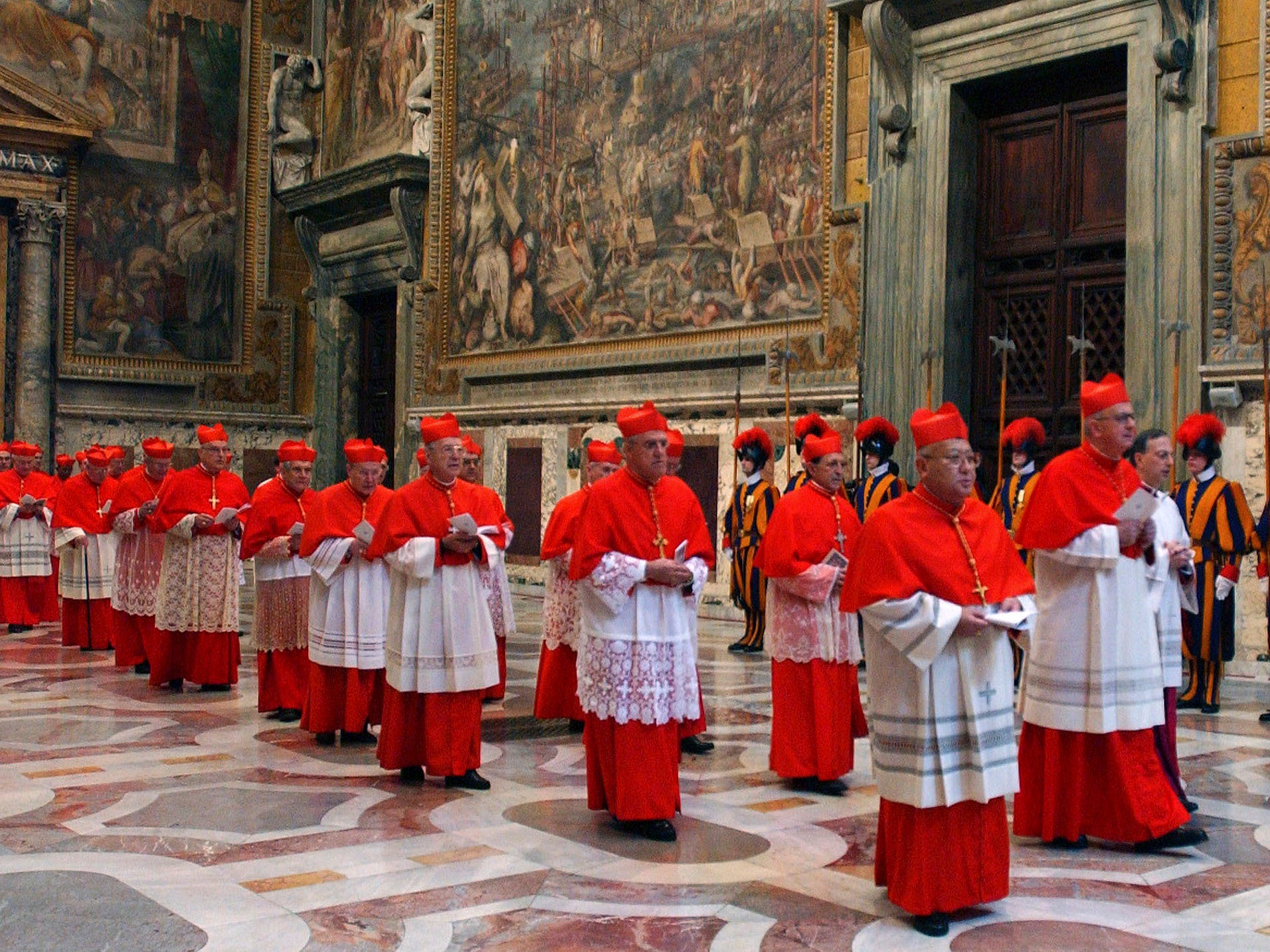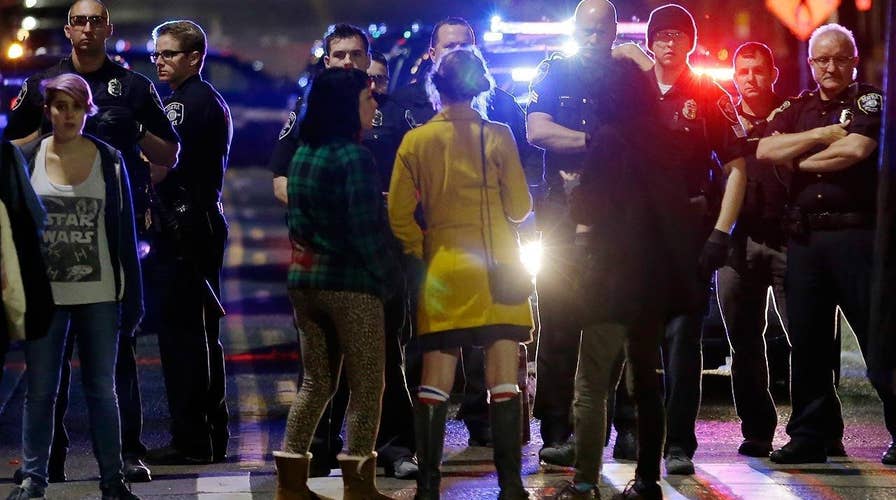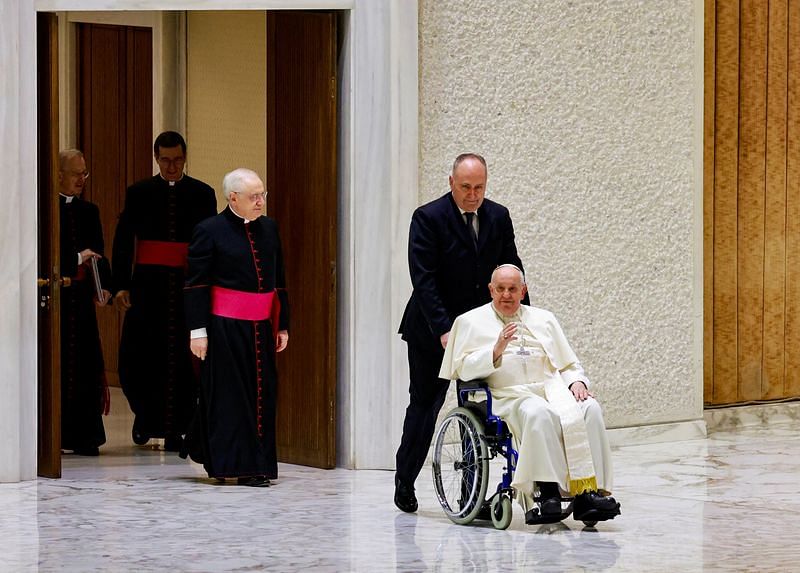Understanding Papal Conclaves: History, Secrecy, And The Election Of The Pope

Table of Contents
A History of Papal Conclaves: From Early Practices to Modern Procedures
The methods of electing a Pope have evolved significantly throughout history. Early papal elections were often less formalized, sometimes involving acclamation or election by the clergy. However, as the Church grew in complexity and influence, the need for a more structured process became apparent. The evolution of Papal Conclaves reflects this need for greater organization and transparency (relative to earlier times, of course).
-
Early methods of papal election: In the early centuries of the Church, the election of the Pope could be a chaotic affair. Acclamation, where the crowd simply shouted out their preferred candidate, was common. Later, elections by the Roman clergy became more prevalent, but these too were often subject to political maneuvering and influence.
-
The introduction of formal conclaves: The concept of a formal conclave—a closed meeting of cardinals—emerged gradually, gaining prominence in the 13th century. This development aimed to reduce external pressures and ensure a more considered selection process. The rules governing conclaves were refined over time through various papal decrees and church councils.
-
Key historical conclaves and their significance: The conclave of 1268, lasting nearly three years, stands out as a prime example of the challenges early conclaves faced. This prolonged deadlock highlighted the need for clearer rules and procedures. Other significant conclaves throughout history have shaped the Church's trajectory and reflected the political and social climates of their time.
-
The impact of various church councils and papal decrees on conclave procedures: Councils like the Second Vatican Council (Vatican II) significantly impacted the procedures, introducing reforms aimed at greater transparency and inclusivity in the selection process. Numerous papal decrees throughout the centuries have shaped the rules governing Papal Conclaves, ensuring their evolution alongside the changing needs of the Church.
The Secrecy Surrounding Papal Conclaves: Maintaining Integrity and Preventing Outside Influence
The secrecy surrounding Papal Conclaves is not simply a tradition; it's a crucial element designed to safeguard the integrity of the election process. This veil of secrecy serves several vital purposes:
-
Preventing external pressures and undue influence on cardinals: The seclusion of the conclave prevents lobbying efforts, political interference, and external pressures that could compromise the free choice of the cardinals.
-
Ensuring the free and unbiased deliberation of the cardinals: The cardinals need an environment free from distractions and external influences to engage in prayerful reflection and discussion to choose the most suitable candidate to lead the Church.
-
Maintaining the sanctity and solemnity of the election process: The secretive nature of the conclave underscores its profound spiritual significance, creating an atmosphere of contemplation and prayer that is essential for this momentous decision.
-
The historical context of secrecy and its evolution: While secrecy has always been a key feature, its implementation and the measures employed have evolved over time, adapting to changing circumstances and technological advancements.
-
Modern security measures employed during conclaves: Today's Papal Conclaves incorporate stringent security measures, including technological surveillance and rigorous protocols to further ensure the secrecy and security of the process.
The Election Process: From the Conclave's Beginning to the Announcement of the New Pope
The election of a new Pope within the Papal Conclave is a multi-stage process, characterized by meticulous procedures and careful deliberation:
-
The role of the cardinals and their responsibilities: The cardinals, as electors, are responsible for prayerful discernment and choosing the next Pope. Their roles are pivotal in ensuring a fair and transparent process.
-
The process of voting and the required majority for election: The voting process involves secret ballots, with a two-thirds majority required for election. This process continues until a Pope is elected.
-
The use of ballots and the "fumata bianca" (white smoke) signal: The iconic white smoke signal signifies to the world that a new Pope has been elected, ending the suspenseful waiting period. Black smoke indicates the absence of a decision, signaling the continuation of the voting.
-
Procedures for handling inconclusive votes and deadlocks: Rules are in place to handle scenarios where a decision cannot be reached quickly, ensuring that the process continues until a Pope is elected.
-
The formal announcement of the newly elected pope (Habemus Papam!): The announcement of the new Pope, the "Habemus Papam!", marks a significant moment for the Church and the world. This announcement is made from the balcony of St. Peter's Basilica.
Key Players in the Papal Conclave:
Beyond the cardinals, several key figures play crucial roles in facilitating the smooth operation of the conclave. The Master of Ceremonies, for instance, is responsible for overseeing the logistical and procedural aspects of the conclave, ensuring everything runs according to established protocols. Other officials, including healthcare professionals and support staff, contribute to the efficient functioning of this important process.
Conclusion
Understanding Papal Conclaves offers a unique glimpse into the heart of the Catholic Church. Their historical evolution, from less formal beginnings to the highly structured process of today, reflects the Church's adaptation to the changing times. The importance of secrecy in maintaining integrity and preventing undue influence is paramount. The intricacies of the election process, from the initial gathering of cardinals to the final announcement of "Habemus Papam!", are steeped in tradition and procedure, reflecting the solemnity of this pivotal event. Deepen your knowledge by exploring further resources on this fascinating and critical process in the selection of the Pope. Further research into the history of Papal Conclaves will reveal even more about this significant aspect of the Catholic Church.

Featured Posts
-
 Protests Erupt Across The Us Voices Against Trumps Policies
Apr 22, 2025
Protests Erupt Across The Us Voices Against Trumps Policies
Apr 22, 2025 -
 Higher Stock Prices Higher Risks What Investors Need To Know
Apr 22, 2025
Higher Stock Prices Higher Risks What Investors Need To Know
Apr 22, 2025 -
 Building Voice Assistants Made Easy Open Ais 2024 Announcement
Apr 22, 2025
Building Voice Assistants Made Easy Open Ais 2024 Announcement
Apr 22, 2025 -
 Open Ai Facing Ftc Investigation Data Privacy And Ai Concerns
Apr 22, 2025
Open Ai Facing Ftc Investigation Data Privacy And Ai Concerns
Apr 22, 2025 -
 World Mourns Pope Francis Death At 88 After Pneumonia
Apr 22, 2025
World Mourns Pope Francis Death At 88 After Pneumonia
Apr 22, 2025
